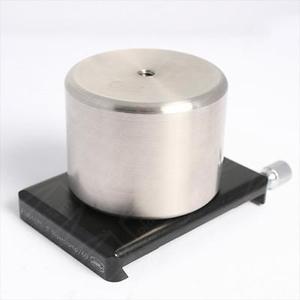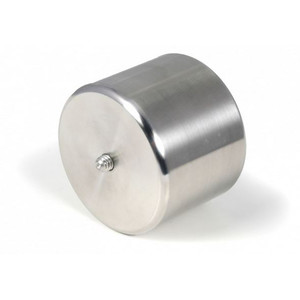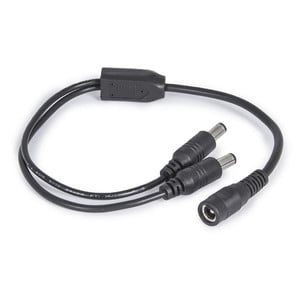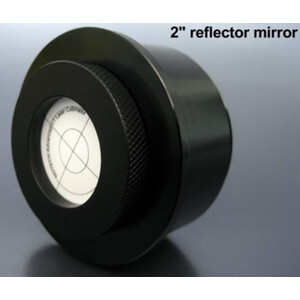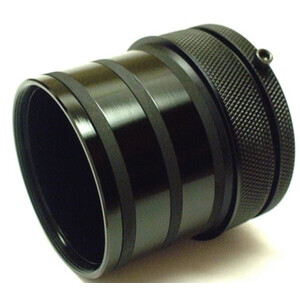Helaas is deze beschrijving nog niet in het Nederlands vertaald. U vindt hier dus een Engelse artikelbeschrijving.
Accurate Collimation without using a Star
In order to achieve an accurate star collimation, normally the amateur astronomer requires good seeing conditions with no cloud, no wind, stable temperature, no light pollution, a well-aligned telescope mount tracking system, telescope optical tube assemble (OTA) thermal equilibrium, and a good visible magnitude star. The visual quality of the referencing star is greatly affected by the prescribed factors most of which are all in Gods hand as you can see in the photo. Adjusting the collimation is guessing game where you move between front and the back of the telescope adjusting the corresponding alignment screw and holding your breath peeping through a high magnification eyepiece referencing the concentricity of the unstable defocused image. This can be an incredibly frustrating experience.
An artificial star can never simulate a real star because it is impossible to collimate with the telescope focus set at infinity. After artificial star collimation, you will need to adjust your focus back to infinity to view a real star by moving the primary mirror to a different focal position. The distance the primary mirror has been adjusted can accumulate mechanical tolerance errors. For some of the mass produced SCTs, the “sticky baffle” on the primary mirror focusing mechanism may also cause mirror-flop. If a mirror-flop has ocurred, it will affect the alignment position which in turn will render the collimation useless. Ideally, It is best to collimate your optics at the same viewing focusing position without major optical displacements to correspond to the final view setting. The HyperStar Laser Collimator can accomplish this task without all the possible accumulated errors.
Collimate Within Focal Distance From Your Telescope
The HyperStar Laser Collimator does not require long distances to achieve high-accuracy collimation. Utilizing the installed flat mirror at the focal point (imaging sensor location), the collimator lasers double-passes the optical train and magnifies the alignment errors to a higher accuracy level. In addition, it also cuts the collimating distance in half achieving near-field alignment process. The collimator is stationed within your telescope's focal length directly in front of your telescope. Setting up for collimation, you will be standing between the telescope and the collimator aiming both the telescope and the collimator at each other. Then you will adjust the HyperStar collimation knobs to bring the returning lasers on the same track. This is a very convenient one-man-operation collimation task.
What is a HyperStar and how does it work?
HyperStar is a multiple lens correction system which is used in place of the normal secondary mirror in the Schmidt correcting plate of the SC telescope. Correction for coma and field curvature of the primary mirror, which would normally be done by the secondary mirror, is carried out by the HyperStar optics - which have been designed by state-of-the-art optical design software. The CCD or DSLR camera is then flange-mounted onto the front of this.
Result:
Your standard Celestron SC telescope is turned into a digital Schmidt design for your CCD or DSLR camera for photography at the primary focus at f/2 (C8, C11) and f/1.9 (C14).
Only now can the efficiency of the digital or CCD camera be again dramatically increased by the legendary performance of the Schmidt camera system. No other combination is comparable. Wide-field sky observing, surveys, observing comets and also normal deep-sky photography can be done much more efficiently using the digital Schmidt camera system.
A 30 seconds exposure will give you get the same image brightness as about 12 minutes at f/10. So exposure times are decreased by around 25 times. Blurred images caused by atmospheric turbulence or tracking errors no longer occur.
The image is therefore sharper altogether. Also, the use of an equatorial mount is no longer required. With exposure times of only 30 seconds required, the effect of field rotation - which makes it impossible for longer exposures to be taken using altazimuth mounts - does not occur. You can take continuous exposures and then overlay the resulting images using image processing to obtain excellent deep sky images and with little effort.
We offer HyperStar optics kits for the C8, C9.25, C11 and the C14 OTAs.
Assembly:
We offer mechanical conversion kits (Article Nos. 16371, 16372, 16373) for making the NORMAL versions of the SC telescopes mentioned above HyperStar compatible.
The FastStar versions of the Celestron telescopes mentioned above are DIRECTLY convertable. Here, the secondary mirror is simply unscrewed and the HyperStar system is screwed in using an adapter ring.
Some advantages of HyperStar optics in a nutshell:
- converts your 'old' Celestron SC telescope into a digital Schmidt camera (but allows further use as a normal SC telescope)
- no problems with primary mirror shift
- allows extreme reduction of exposure times
- dramatically simplified tracking, even with simple altazimuth tracking, makes astrophotography of the highest quality possible
- precise polar alignment in mobile operation is unnecessary since, due to the extremely short exposure times, there is no drift in declination
- the light gathering power and image field size makes astrophotography using narrowband line filters possible (suitable filters and quick-release devices are in preparation as of July 2009)
- DSLR cameras work best at f/2, as they are principally designed to work with fast aperture ratios
- of course the new generation of SC HD OTAs from Celestron is fully HyperStar compatible
FAQ about HyperStar:
Question: How are the optics focused for photography with the HyperStar?
Answer: Using the main mirror, as for the unmodified version.
Question: Can I observe visually by looking through the FastStar?
Answer: No, as the head of the observer would be in front of the Schmidt. The obstruction would be huge.
Question: How disruptive is mirror shift for focusing?
Answer: Removing the secondary mirror eliminates the 5 times magnification of an f/10 SC system. This means that mirror shift is reduced by a factor of 5. Mirror shift is no longer a problem.
Question: How good is the image quality?
Answer: The quality is comparable to that of an RC astrograph system; the resolution is suitable for semi-professional cameras such as the ST-10 from SBIG. The stars are much finer than at f10.
Question: Is the obstruction due to the camera a problem?
Answer: For photographic applications the obstruction is not as critical as for visual observing. Virtually all professional telescopes of several meters diameter have a much bigger obstruction than a SC with HyperStar and DSLR.
Question: What about collimation with the HyperStar lens?
Answer: The HyperStar lens is collimated when it is first used. Switching back from HyperStar to the standard version needs no new collimation as the secondary mirror is simply screwed in again as a calibrated assembly.
Question: does using the HyperStar have any disadvantages?
Answer: Yes, you won't want to go to bed on clear moonless nights!
The HyperStar system is the quickest and easiest way of getting into deep sky astrophotography. No polar alignment, equatorial mount or guiding are necessary. The HyperStar transforms every 8"/ 11" / 14" Celestron SC telescope into a lightning-fast, digital Schmidt camera. Deep sky shots need only seconds instead of hours - astrophotography has never been easier!
